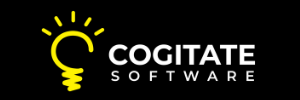We are all guilty of not backing up some piece of important data at one time or another. When disaster strikes we look pretty foolish for not backing up the data. We then make a quick and usually bad choice and select the wrong backup solution. If you are not an IT guru but the normal small business manager, you have to make very important backup decisions without the background or experience required. That leads me to the three W’s: Why, When, and Where of backing up to help inform you.
Why: Simply because data loss can happen to anyone.
There are many reasons why consumers and businesses experience data loss:
Hard drive failure. According to a recent study by Google, an average of 1.7% of drives fail within a year and more than 8.6% of drives fail after three years.
Hardware failure. Failure of other hardware, such as hard drive controllers or memory, can cause data corruption.
Improper system shut-downs. Data can become corrupted when systems are improperly shut down, due to a power failure, or because a user simply presses the power-off switch before properly shutting down the operating system.
Computer viruses and malware. Some studies report that up to 7% of data loss is attributable to computer viruses and malware.
Disasters and on-site losses. Site-related data loss can occur due to power surges, fire, flooding, earthquake and theft.
Disgruntled employees. Sadly, much loss comes at the hands of companies’ own employees. Disgruntled employees may intentionally delete files, format their hard disks or attack server-based data that they routinely access to do their jobs.
Human error. Even happy employees can be responsible for data loss if they accidentally delete files or spill a cup of coffee that results in a computer failure.
Theft and loss. A recent Ponemon Institute study, sponsored by Dell, revealed that up to 12,000 notebooks are lost in airports. Fifty-three percent of the business travelers polled in the survey said their notebooks carry sensitive corporate data, but a surprising 42% of the respondents admitted that they do not backup their data. Amazingly, the survey found that 65% to 70% of the lost notebooks are never reclaimed.
When: It all depends on your business needs.
Frequency of data change and the risk of data loss are the primary factors that should impact the decision of when to backup. The type of computer being backed up can also be a factor in the when question. A desktop, for example, is not usually left on after hours so these need to be backed up during business hours.
Where: Data can be backed up to tape drives, CDs or DVDs, USB flash drives, direct-attached USB flash drives, or the Internet. As with backup strategies, each media selection offers advantages and disadvantages.
Tape Drives. Because of the relatively attractive ratio of cost per Gigabyte, tape drives have been a traditional choice of many IT departments for backing up huge amounts of data. Tape is a sequential media and, although write speeds to tape can exceed those of writes to disks in some cases, locating and restoring files from tapes can be more time-consuming than restoring files from disk-based backups. Automated robotic tape-changing mechanisms can reduce the work of tape rotation and managing large numbers of tapes.
CD or DVDs. These optical media types offer relatively limited capacities (700MB and 4.3GB respectively) but have the advantage of being inexpensive. New Blue Ray high-density DVDs offer double the capacity of traditional DVDs. The most common CD-R and DVR-R formats can be written to only once and their volumes closed to prevent future changes. Write-once media is required by federal regulations for archival storage for some industries. There has been some discussion about whether or not CD-R and DVD-R media types are appropriate for long term archival purposes because of their relatively short life span. Inexpensive aluminum-based CDs can have a life span that is relatively short.
USB Flash Drives. With capacities ranging up to 128GB, flash drives offer a convenient, if not inexpensive, way to backup data. Many consumer-oriented flash drives lack encryption. Since it is fairly easy to misplace or lose a flash drive, these are generally inappropriate for business use. However, some companies offer drives with automatic 256-bit encryption as well as models that are FIPS 140 level 2 compliant for federal government use.
Direct-attached USB Drives. Recent advances in technology have expanded the capacity of single disks to 2TB (terabytes) and have pushed the prices of USB/Firewire direct attached external devices down to about $200. Devices that are 1 TB are available for less than $100. These devices offer a large amount of storage at a reasonable cost. They are easy to connect and they provide rapid recovery times, but they may become damaged if they are moved to be stored off-site.
Internet Cloud-based Storage. The increasingly fast broadband speeds available to both consumers and enterprises have produced an entire industry of companies offering online backup services. Many of these online backup service providers offer geographically redundant storage in data centers that are staffed 24/7 by IT professionals. Corporate data is encrypted prior to transmission to the storage providers, so while these providers may store a company’s data, they do not have access to it. Online storage can be a viable backup option for small to medium businesses that do not have a dedicated IT staff to help manage the backup process. Importantly, online storage ensures that mission-critical data is stored off-site so that data is not lost in the event of a disaster, such as a fire or flood.
